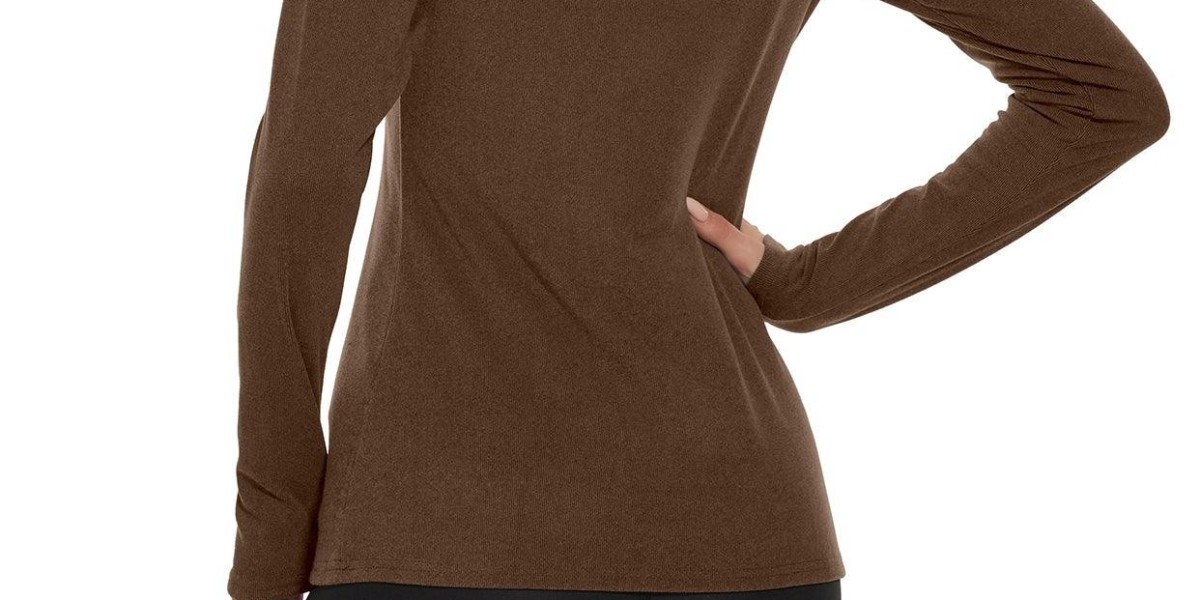When it comes to braving extreme cold weather, having the right thermal clothing can make all the difference. Whether you're hitting the slopes, embarking on a winter hike, or simply enduring the frigid temperatures during your daily commute, thermal clothing serves as your first line of defense against the biting cold. Here’s a detailed guide on how to choose the best thermal clothing for extreme cold weather, ensuring you stay warm, dry, and comfortable.

1. Understand the Importance of Thermal Clothing
Before delving into the specifics of what to look for in thermal clothing, it’s essential to understand its purpose. Thermal clothing is designed to provide insulation, trap body heat, and wick away moisture. The right layers can help you maintain your core temperature, reduce the risk of hypothermia, and prevent frostbite. Choosing the right thermal gear can significantly enhance your outdoor experience during the harsh winter months.
2. Material Matters
The material of your thermal clothing is one of the most critical factors to consider. Different fabrics offer varying levels of insulation, breathability, and moisture-wicking properties. Here are the most commonly used materials in thermal clothing:
a. Merino Wool
Merino wool is a popular choice for thermal wear due to its natural insulating properties. This fine wool provides excellent warmth while remaining breathable. Merino wool is also moisture-wicking, helping to keep you dry during physical activities. Additionally, it has natural odor-resistant qualities, making it suitable for extended wear.
b. Synthetic Fabrics
Synthetic materials like polyester and nylon are commonly used in thermal clothing for their durability and moisture-wicking capabilities. They are lightweight, quick-drying, and provide good insulation. Look for synthetic blends that offer stretch for added comfort.
c. Silk
Silk is lightweight and provides minimal insulation, making it best suited for less extreme cold. It’s soft against the skin and can be an excellent base layer. However, it lacks moisture-wicking properties, so it's not ideal for high-intensity activities.
d. Cotton
While cotton is comfortable, it is not suitable for extreme cold. Cotton retains moisture, which can lead to a chill when exposed to cold air. It’s best to avoid cotton thermal wear for winter conditions.
3. Layering System
When it comes to staying warm in extreme cold, layering is key. A well-structured layering system includes three primary layers:
a. Base Layer
The base layer is your first line of defense against the cold. It should fit snugly against your skin to trap body heat and wick moisture away. Choose materials like merino wool or synthetic fabrics for optimal performance. Look for features such as:
Moisture-wicking properties: This helps keep sweat away from your skin.
Breathability: Essential for regulating temperature during physical activities.
Comfortable fit: A close fit without being restrictive is ideal.
b. Insulation Layer
The insulation layer serves to trap heat and provide warmth. Common materials include fleece, down, or synthetic insulation. When choosing an insulation layer, consider:
Thickness: A thicker layer offers more warmth but may be bulkier. Choose a thickness based on your activity level and the expected temperatures.
Compressibility: Look for insulation that can pack down small if you need to store it in a bag.
Breathability: Even this layer needs to allow moisture to escape to prevent overheating.
c. Outer Layer
The outer layer protects against wind, rain, and snow. This layer should be waterproof or water-resistant, breathable, and durable. When selecting an outer layer, consider:
Weather Resistance: Look for jackets and pants with waterproof or water-resistant materials.
Windproof Features: This prevents cold air from penetrating the layer.
Breathability: Ensure that the outer layer allows moisture to escape to maintain comfort.
4. Fit and Comfort
A proper fit is essential for thermal clothing, as it affects insulation and comfort levels. Here are some tips to ensure you get the right fit:
Snug but Not Tight: The base layer should fit snugly without constricting movement. The insulation layer can be slightly looser for added comfort.
Room for Movement: Make sure you can move freely in your thermal clothing, especially if you plan on engaging in activities like skiing or hiking.
Adjustable Features: Look for adjustable cuffs, hoods, and hems to create a custom fit that prevents cold air from entering.
5. Moisture Management
Moisture management is critical when selecting thermal clothing for extreme cold. The best thermal wear will wick sweat away from your body, preventing it from cooling you down. Consider the following:
Moisture-Wicking Properties: Choose materials that are specifically designed to wick moisture away from your skin.
Quick-Drying: Look for fabrics that dry quickly to ensure you stay comfortable even if you work up a sweat.
Antimicrobial Treatments: Some thermal clothing comes with antimicrobial treatments that reduce odor and bacteria buildup, allowing for extended wear.
6. Consider the Activity Level
The type of activities you plan to engage in during extreme cold will influence your thermal clothing choices.
a. High-Intensity Activities
If you’ll be participating in activities like skiing or snowshoeing, you may want lighter base layers that wick moisture efficiently. Look for breathable fabrics that allow for temperature regulation.
b. Low-Intensity Activities
For lower-intensity activities, such as casual walks or daily commutes, you might prefer heavier base layers and insulating layers for extra warmth.
c. Varied Activities
If you anticipate engaging in a range of activities, consider thermal clothing that allows for easy layering and adaptability.
7. Durability and Care
Given that extreme cold often requires layering and frequent use, durability is key. Look for thermal clothing that can withstand the rigors of outdoor activities. Here are some tips:
Quality Construction: Check the seams and stitching. Reinforced seams can enhance durability.
Easy Care: Look for thermal clothing that can be machine-washed and dried. Fabrics that retain their shape after washing are also ideal.
8. Style and Functionality
While functionality is essential, style should not be overlooked. Modern thermal clothing comes in various designs that can be both functional and fashionable. Consider the following:
Versatile Designs: Choose thermal wear that can double as everyday clothing, allowing you to transition easily from outdoor activities to social settings.
Color and Style: Select colors and styles that fit your personal aesthetic, as this will make you feel more comfortable wearing them.
Conclusion
Choosing the best thermal clothing for extreme cold weather requires careful consideration of various factors, including materials, fit, layering, moisture management, and durability. With the right thermal gear, you can confidently face the cold and enjoy outdoor activities without compromising on comfort or style. Invest time in selecting high-quality thermal clothing that suits your lifestyle and keeps you warm, dry, and comfortable during the harshest winter conditions.
Website. https://soneven.com/


